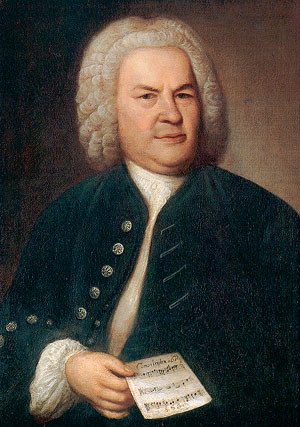It reminded me of my days in their choir, particularly the good days when we got to sing Bach and other traditional four part harmonies. Out of The Lutheran Hymnal, we sang “Jesus, I will ponder now” — something I’ve never heard in a ECUSA/Anglican service but was very familiar from my LCMS period.
My former section partner drafted me to the choir to help him with another local favorite — “God so loved the world” by John Stainer.
However, the musical highlight of the Tenebrae service was the hymn I consider the quintessential Good Friday hymn: “O sacred head now wounded.” It was sung in between passion lessons as the candles were extinguished.
The original 12th century Latin text (Salve caput cruentatum) is attributed to St. Bernard of Clairvaux, but the hymn owes its origins to the German Lutheran reformers: a German adaptation by Paul Gerhardt, the melody (Passion Chorale) by Hans Leo Hassler (1601).
Despite its Lutheran bonafides, it’s also a familiar tune among Anglicans. Oremus lists the hymn as being in all the major Anglican hymnals: Hymns Ancient and Modern, The English Hymnal, Songs of Praise and New English Hymnal in England, Hymnal 1916, Hymnal 1940 and Hymnal 1982 in the US, as well as hymnals from Ireland, Canada and Australia.
The Lutheran Hymnal (1941) uses their own harmonization while ironically the Anglicans seem to use the Bach harmonization (with many more passing notes). The Lutheran Service Book (2006) lists both harmonization.
The other major difference is in the German to English translation. Hymnal 1940 (#75) and Hymnal 1982 (#168) use an English translation by Robert Seymour Bridges that begins:
O sacred head, sore woundedwhile the American Lutherans use an unattributed translation from the TLH that’s slightly different:
Defined and put to scorn.
O kingly head, surrounded,
with mocking crown of thorn.
O sacred Head, now wounded,I’ve sung both so at this point both seem OK. A more serious difference is that the Lutherans keep all 10 verses, while the ECUSA hymnals only keep 4 and 5 respectively (a rare example of where H82 is an improvement). Alas, the LSB drops down to 4 verses for Bach and 7 verses for the TLH harmonization.
With grief and shame weighed down.
How scornfully surrounded
With thorns, Thine only crown.
Still, it’s hard to imagine a hymn more appropriate for Good Friday. It would be a “must sing” hymn for Good Friday if I were a Continuing Anglican music director, just as it is at this LCMS parish. The only other hymn that comes to mind is the Negro spiritual “Were you there when they crucified my Lord?” (H40: #80) which we used as an anthem one year at this LCMS parish.
Update Saturday 3:30 p.m.: Catching up on Issues Etc., I found that on Friday it broadcast an interview with Pastor Will Weedon on this very hymn. Quoting Dr. C. Matthew Philips of Concordia U Nebraska, Pastor Weedon attributes the Latin text to Arnulf of Louvain, a 13th century poet and abbot.
A quick search on Google Scholar reveals a 2005 article that says:
Gerhardt could still use medieval models for his hymnody, including Arnulf of Louvain, whose 'Salve caput cruentatum' lies behind the well-known 'O Haupt voll Blut und Wunden' ('O sacred head surrounded').
